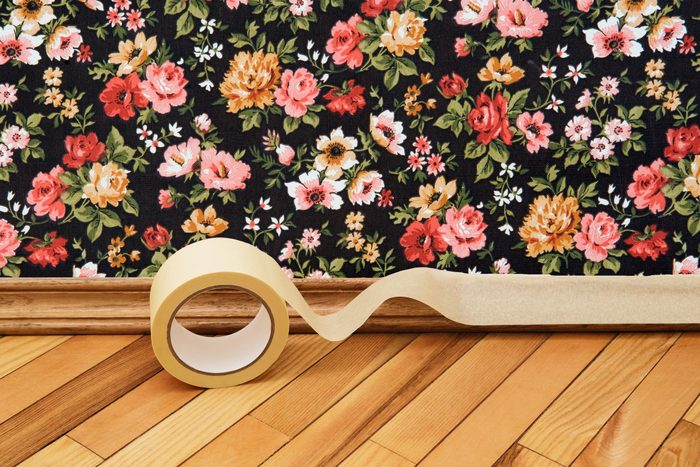
Tape Baseboards
Begin by putting masking tape over baseboards and the top edge of wall panels.
Water will drip down the walls as you soak the wallpaper. DiGilio says taping over the baseboards will keep water out of the crevice between your baseboard and wall where you don’t want moisture to collect.
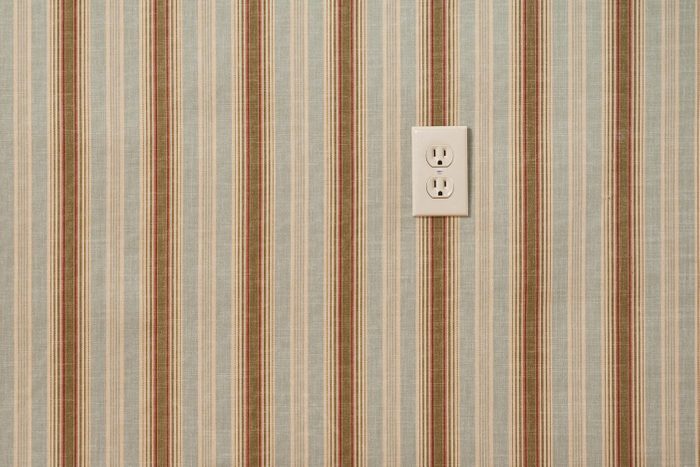
Keep Outlet Covers On
Keep the plates on your outlets and light switches when you soak the wall to help water flow over areas with electrical wiring. Take covers off when you start to remove wallpaper in that area. Bechtell says putting masking tape over outlets keeps water from seeping in as well.
Remove wall sconces at the start because they can be fragile, DiGilio says. Use a sponge instead of a sprayer to wet areas near wall sconce wiring.
Above all, be smart when working around electricity. Don’t spray directly onto outlets. Soak up excess water that drips near wiring. Work slowly. Better yet, go to the fuse box and turn off power to the room.
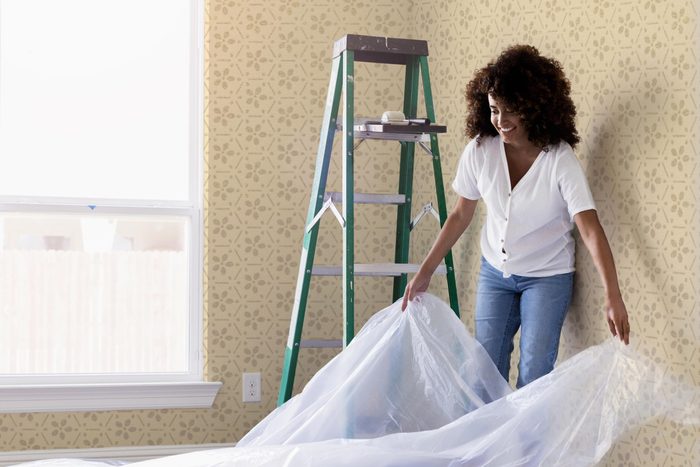
Put Down Plastic, Then Fabric Drop Cloths
Double up on water protection. Plastic drop cloths will protect your floors or other items you can’t move. Putting fabric drop cloths over the plastic will help soak up the water, Bechtell says. That will make cleanup easier, and slipping on wet plastic less likely.
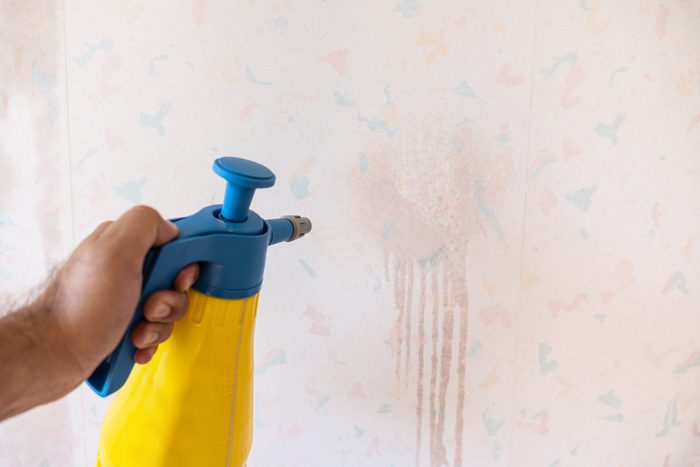
Let It Soak
Time is your friend. Go around the room four or five times with a sprayer, then let the water or wallpaper removing solution sit for about 45 minutes. Give seams some extra attention to help water get behind the wallpaper. Then mist each piece again and use a six-inch broad knife to start scraping it off the wall, DiGilio says.
“Spray it down, let it soak in,” Cintura says. “It might come off in one piece.”
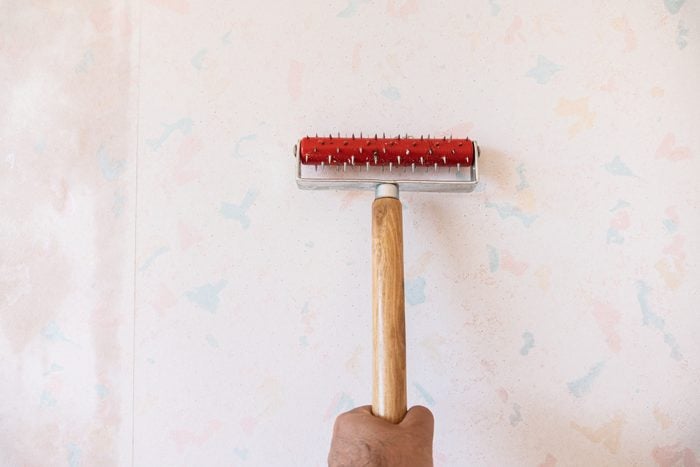
Start Minimally, Then Add Tools as Needed
A lot of wallpaper will come off just by soaking it with hot water or a wallpaper removal solution, then peeling it off or scraping it with a broad knife.
If that doesn’t work, Bechtell says poke holes in wallpaper with a scoring tool before soaking. This helps water penetrate vinyl wall covering or wallpaper that may have been installed incorrectly. If that doesn’t work, try a wallpaper steamer or even a clothing steamer.
“If the wallpaper is extremely stubborn, the steamer is like the last line of defense,” Cintura says. “It’s like you’re losing the war, and you’re going to pull out this cannon. That’s the steamer.”
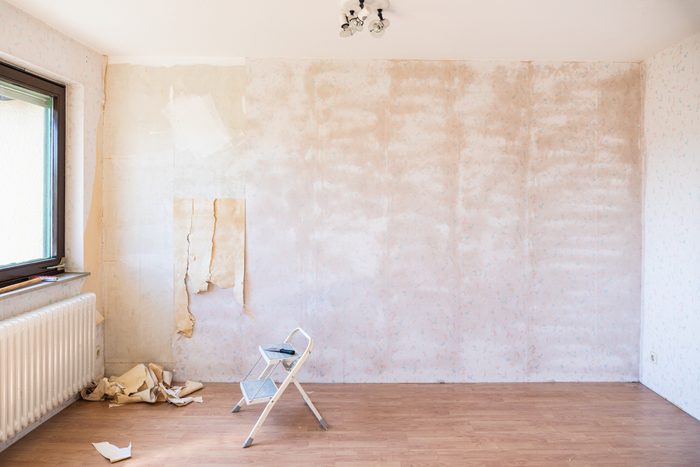
Check Your Wall Material
Be more gentle when scraping wallpaper off drywall than plaster, Bechtell says. Drywall is softer than plaster, and you may damage the wall if you’re not careful.
If you use a scoring tool, start gently and add pressure as needed, especially when working on drywall. Too much pressure will poke holes in the drywall. DiGilio also recommended caution when using a steamer on drywall since it’s a porous surface.
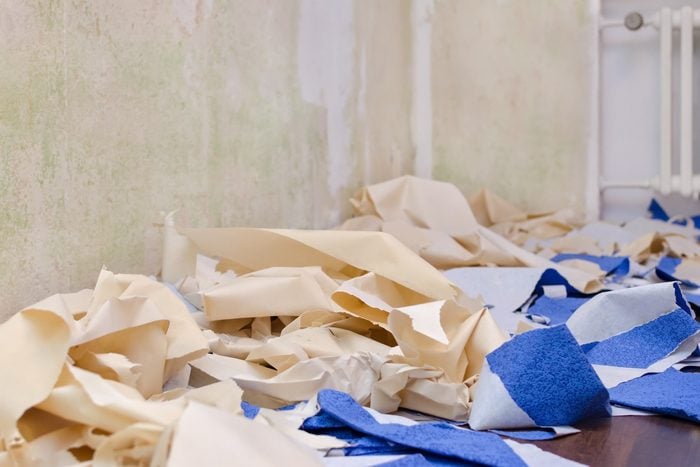
Use Old Wallpaper as an Extra Drop Cloth
Instead of immediately throwing away wallpaper you’ve peeled off, spread it on the floor as an extra drop cloth and trash collection tool, DiGilio says. Then when you’re done, just roll up the wallpaper sheet and stuff the entire bundle in the trash.
Removed wallpaper is also great for cleaning a broad knife covered in paste.
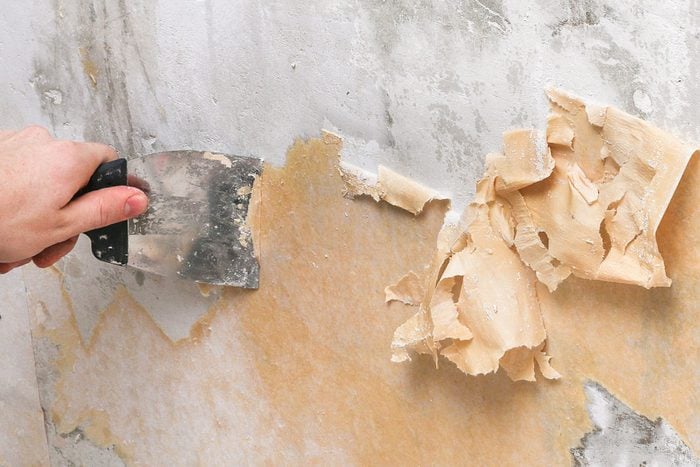
Remove All Paste
If you don’t remove all the old wallpaper paste before painting, your paint will crystallize and bubble on top of it. Scrape and scrub the paste off the wall as you take the wallpaper down since it’ll already be wet, Bechtell says.
If you rub your fingers against the wall and feel them hesitate, that tells you all the paste is off, DiGilio says.
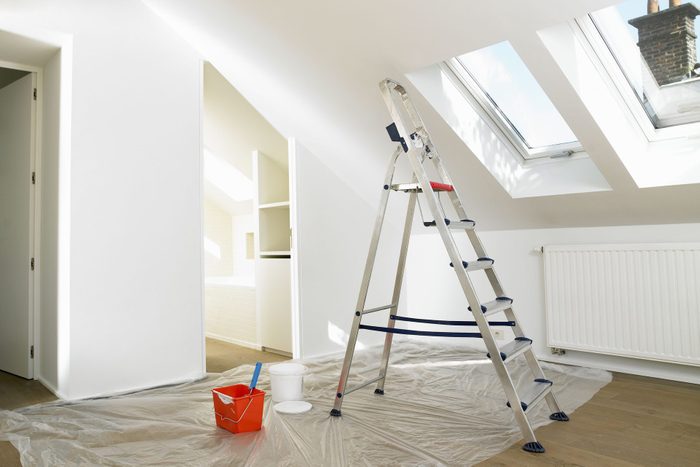
Prep Your Walls When Applying Wallpaper
DiGilio, Bechtell and Cintura all said one thing will determine how easy it is to remove wallpaper: whether it was installed correctly. Keep that in mind as you apply any new wallpaper.
Prime the wall with a wallpaper primer before putting up the new stuff. Read the manufacturer’s installation instructions first. Your future self, or the next person to inhabit your space, will thank you.

